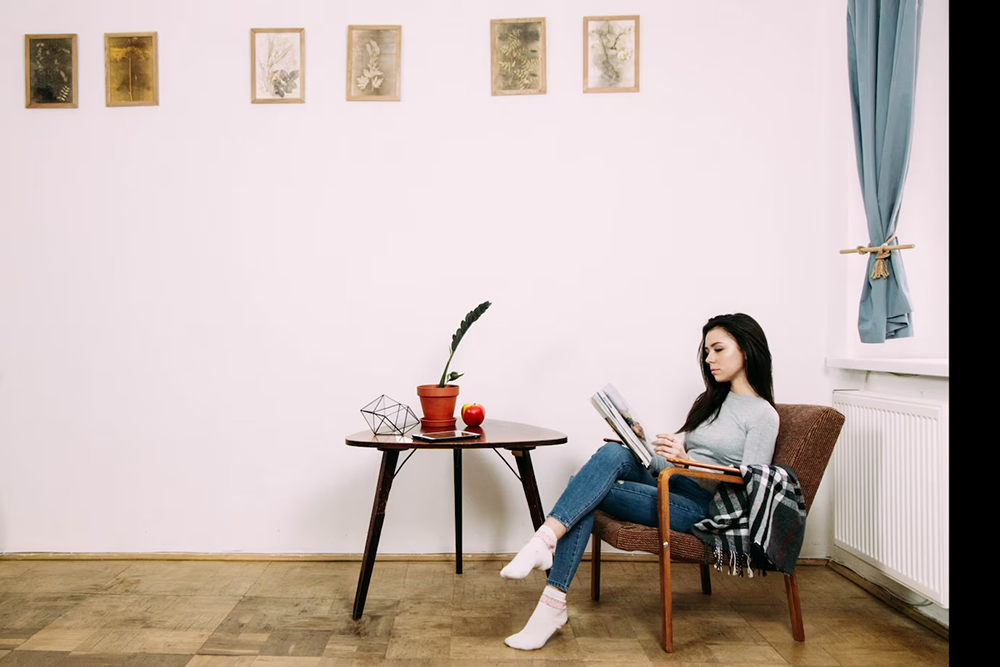Color psychology plays a significant role in interior design, as colors have the power to evoke emotions, set the mood, and create a specific atmosphere in a living space. When used thoughtfully, colors can influence our feelings, behaviors, and overall well-being. From calming and serene to energizing and vibrant, the right color choices can transform your home into a place that resonates with your emotions and enhances your daily experiences. Here’s a closer look at color psychology in home decor and how you can use it to create the desired mood and atmosphere:
Understanding Color Psychology:
Color psychology is the study of how colors affect human behavior, emotions, and mood. Different colors evoke distinct feelings and responses, making them a powerful tool in interior design. Warm colors like red, orange, and yellow are associated with energy and excitement, while cool colors like blue, green, and purple are linked to calmness and relaxation.
Calm and Tranquility:
For spaces where you want to create a sense of calm and tranquility, consider using cool colors like soft blues, light greens, and lavender. These colors promote relaxation and a peaceful atmosphere, making them ideal for bedrooms, living rooms, and meditation spaces.
Energetic and Vibrant:
To infuse energy and vibrancy into a room, opt for warm colors like red, orange, and bright yellow. These colors can stimulate creativity and conversation, making them suitable for areas like dining rooms or spaces where you want to encourage social interaction.
Neutral and Serene:
Neutral colors like beige, cream, and gray can create a sense of serenity and balance in a room. They serve as a versatile backdrop for other colors and provide a soothing ambiance in any space.
Cozy and Warm:
To create a cozy and inviting atmosphere, use warm and earthy tones like terracotta, deep browns, and warm grays. These colors can make a room feel intimate and welcoming, making them suitable for living rooms and bedrooms.
Cheerful and Playful:
Bright and playful colors like coral, turquoise, and lime green can add a touch of cheerfulness and playfulness to a room. Consider using these colors in children’s rooms, playrooms, or areas where you want to create a lighthearted atmosphere.
Balance and Harmony:
Using a balanced combination of colors can create a harmonious and visually appealing space. Consider using the 60-30-10 rule, where 60% of the room is a dominant color, 30% is a secondary color, and 10% is an accent color.
Consider Cultural Associations:
It’s essential to consider cultural associations and personal preferences when choosing colors for your home. Different cultures may have varying interpretations of colors, so it’s essential to choose colors that resonate with you and your family.
Lighting and Space:
Keep in mind that lighting and the size of a room can influence how colors appear. Natural light can enhance the vibrancy of colors, while artificial lighting may create a different ambiance. In small spaces, using light and neutral colors can make the room feel more open and spacious.
Test Before Committing:
Before painting an entire room or investing in large furniture pieces, test the colors in the space. Paint small swatches on the wall or use fabric samples to see how the colors interact with the existing elements in the room.
Create Flow with Color:
In open-concept spaces, use a consistent color palette to create a sense of flow and cohesiveness throughout the area. This approach ties different areas together and makes the space feel unified.
Layering with Colors:
Don’t be afraid to layer colors on your home decor. Mix and match different hues, shades, and tints to create depth and visual interest in your space. This can be achieved through the use of throw pillows, rugs, artwork, and other accessories.
Use Colors to Highlight Features:
Colors can be used strategically to highlight architectural features or focal points in a room. For example, a bold accent color on an accent wall can draw attention to a fireplace or an interesting architectural detail.
Flexibility in Home Decor:
Remember that colors in home decor are not permanent fixtures. You can easily update the mood and atmosphere of a room by changing accessories like throw pillows, curtains, and artwork.
Personal Expression:
Ultimately, color psychology is a tool to enhance your living space and create an environment that reflects your personality and preferences. Use colors in a way that brings joy and comfort to you and your family.
Conclusion:
Color psychology in home decor is a powerful tool that allows you to shape the mood and atmosphere of your living space. From calming and serene to energetic and vibrant, the right colors can evoke specific emotions and enhance your overall well-being. When choosing colors for your home, consider the feelings and emotions you want to evoke in each space. With thoughtful color choices and a well-planned design, you can create a harmonious and inviting environment that reflects your personal style and enriches your daily experiences in your home.

